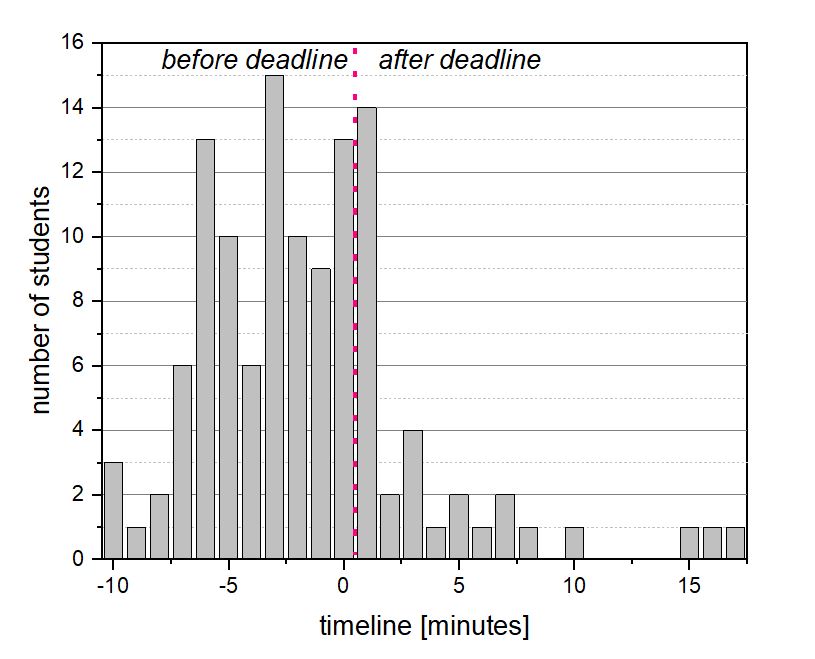Conversion of a conventional to a digital lecture under the conditions of Covid19 – an example from a bachelor lecture on finishing, dyeing & printing
DOI:
https://doi.org/10.25367/cdatp.2021.2.p173-186Abstract
Due to the Covid-19 pandemic situation during the years 2020 and 2021, the necessity occurred to convert conventional university lectures into digital ones, to avoid personal contacts between people and by this minimizing the spreading of the disease. Beside lectures, also exams have to be transferred to minimize personal contacts. This paper reports on a lecture in a bachelor course with more than 100 students and its conversion to digital format. The lecture is related to textile finishing processes – especially to dyeing and printing. The experience get during the digital lecture are compared with the results gained during the last decade with the same lecture in conventional style. Main tools of the digital format are video conferences and digital worksheets. Challenging are the contact to students by e-mail and the time management of the students especially during the final digital homework. In conclusion, digital lecture and exam are valuable tools to increase the number of participating students and their success in the exam. These tools could be also used successfully in post-corona times especially for lectures given for experienced students in higher semester.
References
Marius Schwarz, Aline Scherrer, Claudia Hohmann, Jonas Heiberg, Andri Brugger and Alejandro Nuñez-Jimenez. 2020. COVID-19 and the academy: It is time for going digital. Energy Research & Social Science, 68, 101884. https://doi.org/10.1016/j.erss.2020.101684
Christopher M. Pastore, Yordan Kyosev, F. A. Fassihi and Becky Flax. 2021. Textile education during the 2020 pandemic: experiences in US, South Africa and Germany. COMMUNICATIONS IN DEVELOPMENT AND ASSEMBLING OF TEXTILE PRODUCTS – CDATP, 2, 18-33. DOI 10.25367/cdatp.2021.2.p18-33
P. Ayu Suci Lestari, Gunawan and dan Syahriani Yulianci. 2020. Effectiveness of online lectures using digital platform during the pandemic COVID-19. Indonesian Journal of Applied Science and Technology, 1 (3), 107-115.
Olaf Zawacki-Richter. 2021. The current state and impact of Covid-19 on digital higher education in Germany. Hum. Behav. & Emeg. Tech., 3, 218-226. DOI: 10.1002/hbe2.238
Thomas Grethe and Boris Mahltig. 2020. Alternative Prüfungsformen im Sommersemester 2020. Die Neue Hochschule DNH, 06-2020, 42-45.
Roger H. Wardman. 2018. An Introduction to Textile Coloration. John Wiley & Sons Ltd., Hoboken.
J. R. Aspland. 1992. Vat Dyes and Their Application. Textile Chem. Color., 24(1), 22-24.
J. R. Aspland. 1992. Practical Application of Sulfur Dyes. Textile Chem. Color., 24(4), 27-31.
Kawee Srikulkit and Pornchai Santifuengkul. 2000. Salt-free dyeing of cotton cellulose with a model cationic reactive dye. Coloration Technology, 116(12), 398-402. doi.org/10.1111/j.1478-4408.2000.tb00017.x
Wu Hanbing, Hajo Haase and Boris Mahltig. 2020. Cationic Pretreatment for Reactive Dyeing of Cotton and its Simultaneous Antibacterial Functionalisation. Tekstilec, 63(1), 27-37. DOI: 10.14502/Tekstilec2020.63.27-37

Downloads
Published
How to Cite
Issue
Section
License
Copyright (c) 2021 Boris Mahltig

This work is licensed under a Creative Commons Attribution-NonCommercial-NoDerivatives 4.0 International License.





